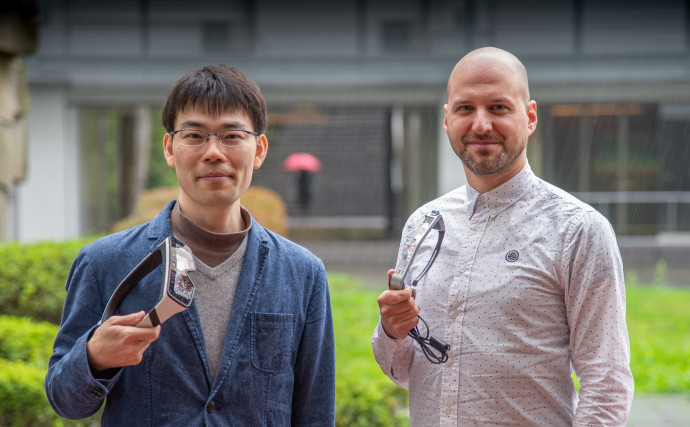Next-generation glasses that could help you find a needle in a haystack

Dr Tobias Langlotz from the University of Otago will develop the first prototype of computational eyewear that amplifies users’ perception of their environment in real time. These glasses have the potential to enhance human vision as well as compensate for visual impairments.
Published 8 November 2018
Imagine wearing glasses that could amplify your awareness of changes in your environment in real time. For example, if you were looking for a needle in a haystack, the glasses would work like a subtle Instagram filter to make any bright, shiny object stand out from the hay, allowing you to find that elusive needle. The glasses could alert the wearer to potential dangers as they happen, a feature particularly useful in high-risk environments such as construction sites. They could also highlight mechanical parts in a jet engine that require attention, such as a loose screw. The rise of glasses with an integrated semi-transparent display in the user’s view, known as ‘optical see-through head-mounted displays (OSTHMDs)’, offer the potential to move beyond what is possible with purely optical prescription glasses. However, glasses currently on the market are not designed for enhancing our vision, but for games and other Augmented Reality applications.

Early experimental prototypes for vision augmentations developed in a related project (Photo: provided)
Dr Tobias Langlotz of the University of Otago has been awarded a Marsden Fund Fast-Start grant to develop a computational prototype for glasses that will enhance, rather than alter, the visual field of the user. He will design the hardware and software aimed at conventional-style eyewear that senses and amplifies the environment using a semi-transparent display with pixel perfect precision. The resulting glasses will provide subtle cues to the wearer so that they are not distracted from the task at hand, or have the feeling of being controlled by the glasses.
This project will contribute substantially to the growing field of wearable and visual computing. The results may help extend human vision and compensate for visual impairments.
